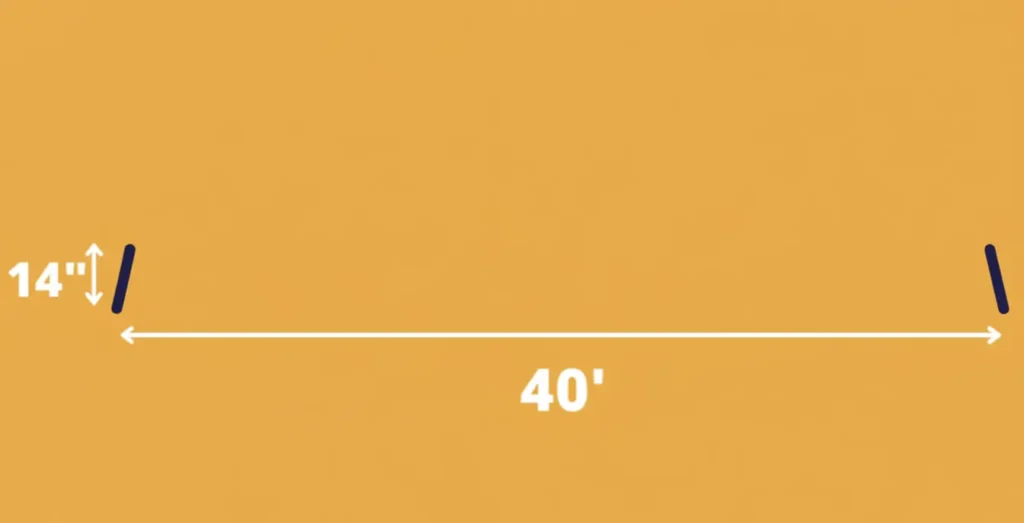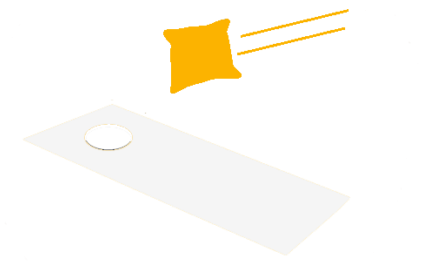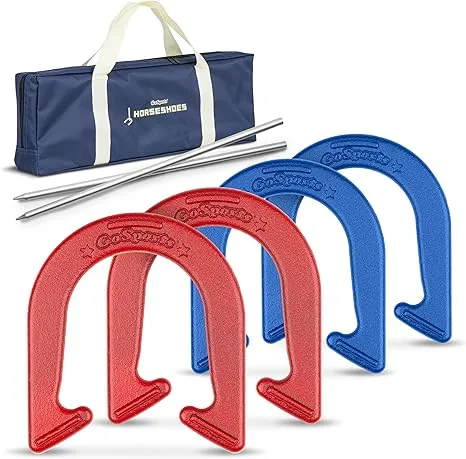Horseshoes Rules | How to Play Horseshoes
You toss metal horseshoes at stakes in the ground. Get ringers. Score points. Win the game.
Horseshoes is pure Americana. Roman soldiers supposedly invented it over 2,000 years ago with discarded horseshoes from their cavalry. American soldiers made it famous. Today, millions play it at backyard parties, campgrounds, and tournaments.
The rules are simple. The skill takes practice. Anyone can start playing in five minutes.
Let me show you how.
What You Need for Horseshoes
Horseshoes requires minimal equipment.
You need four horseshoes. Regulation pitching horseshoes weigh about 2.5 pounds each and measure 7.5 inches long by 7 inches wide. The opening measures 3.5 inches. You get two horseshoes per player or team.
You need two stakes. Stakes are metal rods made of iron or soft steel. Each stake measures 1 inch in diameter and stands 15 inches above ground. Stakes lean about 3 inches toward each other at a 12 degree angle.
You need space. A regulation court needs about 50 feet of length. Backyard games work in smaller spaces.
Most horseshoe sets package everything together. You can start playing right away with this horseshoes set. It includes the stakes and shoes you need for a full game.
Setting Up Your Horseshoe Court
Stakes are placed 40 feet apart. This is the standard distance for adult play.
Measure from stake to stake at ground level. Get the distance right. Too close or too far changes the game completely.
Drive each stake into the ground leaving 15 inches protruding. Tilt the stake about 3 inches toward the opposite stake. This lean helps horseshoes catch and stay on.
The pit area surrounds each stake. Regulation pits measure 43 to 72 inches long and 31 to 36 inches wide. The stake sits in the center.
Fill pits with sand, loose dirt, or moist clay. Blue clay works best for cushioning horseshoes and keeping them from bouncing. Sand is easier to find and works fine for casual play.
Pitching platforms sit on both sides of each pit. These platforms measure roughly 6 feet long by 18 inches wide. You stand on these platforms when throwing.
Mark foul lines at 27 feet and 37 feet from each stake. Adult men pitch from the 37 foot line. Women and youth pitch from the 27 foot line. Older men over 70 can choose either line.
How Many Players Can Play Horseshoes
Horseshoes accommodates two to four players.
Singles: Two players compete directly. Each player uses two horseshoes. Both players stand at the same stake and throw to the opposite stake.
Doubles: Four players form two teams. Teammates stand at opposite stakes. One teammate is at stake A, the other at stake B. Each player throws two horseshoes.
Team play moves faster since you’re always throwing toward your teammate rather than walking back and forth.
Basic Horseshoes Rules
The core rules are straightforward.
Throw underhand only. No overhand pitching allowed. Underhand gives better control and follows tradition.
Don’t cross the foul line. Your foot must stay behind the foul line when you release the horseshoe. Stepping over makes that shoe a foul and it scores zero.
Pitch both shoes before opponent throws. Player one throws both horseshoes. Then player two throws both horseshoes. This completes one inning.
Only shoes within 6 inches count. Any horseshoe farther than 6 inches from the stake scores zero points. This distance is measured as one horseshoe width.
Walk to the opposite stake together. After both players pitch, walk to the other end together. Determine the score. Pick up your horseshoes. Pitch back toward the original stake.
Continue alternating ends. Keep throwing back and forth until someone reaches the winning score.
How to Throw Horseshoes

Proper technique improves your accuracy dramatically.
- Stand sideways to the target. Your throwing arm side should face the stake. This gives you better aim and control.
- Hold the horseshoe with your thumb on top and fingers underneath. Grip it firmly but not too tight.
- Swing your arm back naturally like a pendulum. Keep your elbow fairly straight. Don’t bend your wrist much.
- Step forward with your opposite foot as you swing. Release the horseshoe as your arm comes forward and up.
- The horseshoe should rotate end over end as it flies. One full rotation works for most people. Too many spins and it won’t land right.
- Aim for the stake. Watch where your shoes land. Adjust on the next throw.
- Some players grip the horseshoe differently. Experiment to find what feels natural. The key is consistency.
Horseshoes Scoring System
Scoring uses the cancellation method in most games.
Ringer: The horseshoe completely encircles the stake. Both ends of the horseshoe must clear the stake if you place a straightedge across them. Ringers score 3 points.
Closest shoe: If no ringers are thrown, the horseshoe closest to the stake within 6 inches scores 1 point.
Two closest shoes: If both your horseshoes are closer than both opponent shoes, you score 2 points.
Ringer plus closest shoe: If you throw a ringer and your other shoe is closer than opponent shoes, you score 4 points.
Two ringers: If you throw two ringers and your opponent throws none, you score 6 points.
Leaners: A horseshoe leaning against the stake counts the same as any shoe touching the stake. Leaners score 1 point if they’re the closest. They have no special value over flat shoes touching the stake.
Cancellation Scoring Explained
Only one player scores per inning. Points cancel each other out.
If you throw one ringer and your opponent throws one ringer, they cancel. Zero points scored.
If you throw one ringer and your opponent’s closest shoe is 4 inches away, you score 3 points. Your ringer beats their close shoe.
If both your shoes are 3 inches from the stake and both opponent shoes are 5 inches away, you score 2 points for having both shoes closer.
The player who scores or ties gets to pitch first in the next inning.
Winning the Game
Different formats determine the winner.
21 point games are standard for casual backyard play. First player or team to reach exactly 21 points wins.
40 point games are common for more competitive play. First to 40 wins.
Shoe limit games play a set number of shoes instead of targeting a point total. 40 or 50 shoes per player is typical. Whoever has the most points after all shoes are thrown wins.
Inning limit games play a specific number of innings like 20 or 25. High score at the end wins.
Tournament play typically uses 40 or 50 point games or shoe limits.
You must win by scoring your own points. If your opponent bumps your horseshoe to give you the winning point, you don’t win. You must earn the final point yourself.
If you enjoy backyard games, check out my guide on how to play cornhole, bocce ball, and croquet.
Horseshoe Court Dimensions
Understanding standard measurements helps with proper setup.

These are regulation sizes. Backyard games can adjust for available space or player ability.
Horseshoes Strategy and Tips
Good players use specific techniques to improve their game.
- Find your grip and stick with it. Consistency matters more than perfect form. Once you find a grip that works, use it every time.
- Watch your rotation. Count how many times your horseshoe rotates in flight. Adjust your throwing motion to get one clean rotation.
- Aim for ringers always. Even if you miss, aiming for the stake keeps you close. Shoes that miss ringers often end up scoring 1 point anyway.
- Play defense. If your opponent has a ringer, try to knock it off with your second shoe. Removing their points is as good as scoring your own.
- Control your distance. Overthrowing wastes energy and reduces accuracy. Find the right power level and repeat it.
- Stay relaxed. Tension in your arm and shoulder hurts your throw. Breathe. Keep loose.
- Practice from both distances. Get comfortable throwing from 27 feet and 37 feet. This prepares you for any rule variation.
- Study your misses. Landing short means more power. Landing long means less. Left or right means adjust your aim.
Horseshoe Pitching Etiquette
Good horseshoes includes proper conduct.
- Stand well back when your opponent throws. Give them clear space and quiet.
- Wait for all shoes to land before walking to the stake. Never retrieve horseshoes while someone is pitching.
- Let the opponent call close measurements. If you disagree, measure together using a straightedge or ruler.
- Don’t trash talk excessively. Friendly banter is fine. Mean spirited comments ruin the game.
- Keep the pace moving. Don’t take five minutes analyzing each throw.
- Congratulate good ringers even from opponents. Sportsmanship matters.
- Help maintain the pit. Smooth the sand or clay between innings. Fill divots.
Variations and House Rules

Different groups play with different optional rules.
Count all scoring: Instead of cancellation, each player scores all their points every inning. Games reach high scores quickly.
Leaner bonus: Award 2 points for leaners instead of 1. This rewards shots that nearly ringer.
No cancellation: Simpler scoring where everyone counts their points independently without canceling.
Shorter distance: Move stakes to 30 feet for kids or beginners. This makes ringers more achievable.
Team rotation: In doubles, teammates switch ends every few innings. This keeps both players engaged.
Agree on which rules you’re using before the first pitch. Write them down if playing with new people.
Building a Horseshoe Pit
You can construct permanent horseshoe pits with moderate effort.
Mark the locations 40 feet apart. Dig out the pit areas to a depth of 8 to 12 inches.
Frame the pits with landscape timbers or pressure treated lumber. This contains the fill material.
Drive stakes in the center of each pit. Make sure they lean toward each other properly. Use a level to check the angle.
Fill pits with sand, clay, or loose dirt. Wet clay packs best but requires more maintenance. Sand drains well and stays clean.
Build pitching platforms from wood, concrete pavers, or compacted gravel. Make them level and stable.
Mark foul lines clearly with paint or embedded markers.
Total cost runs $100 to $500 depending on materials and pit size. Professional installation costs more but ensures proper dimensions.
Horseshoes for Kids
Kids love horseshoes because success is achievable quickly.
Shorten the distance to 20 or 25 feet. This makes ringers possible for smaller arms.
Use lighter horseshoes if available. Some sets come with plastic horseshoes that weigh less. These work great for young kids.
Skip the pit and just drive stakes in the lawn. Grass cushions horseshoes fine for casual play.
Lower the winning score to 11 or 15 points. This keeps games shorter and maintains attention.
Let kids pitch from anywhere comfortable. Strict foul lines can come later when they’re older.
Celebrate every ringer loudly. Positive reinforcement builds enthusiasm.
Common Horseshoes Mistakes
New players make predictable errors.
- Throwing too hard. Power doesn’t equal accuracy. A smooth, controlled throw beats a wild fastball.
- Wrong rotation. Too many spins or not enough causes horseshoes to land awkwardly. Practice getting one clean rotation.
- Poor follow through. Stopping your arm motion abruptly after release kills accuracy. Let your arm finish naturally.
- Inconsistent grip. Changing how you hold the horseshoe between throws creates different results. Find one grip and stay with it.
- Not watching the stake. Look at your target, not at your hand. Focus on where you want the horseshoe to go.
- Stepping over the line. This fouls your throw. Plant your foot and keep it behind the line.
- Rushing throws. Take your time. Line up. Breathe. Then pitch.
Horseshoe Tournaments

Want to compete seriously? Join a tournament.
The National Horseshoe Pitchers Association (NHPA) sanctions tournaments nationwide. They use standardized rules and track player statistics.
Tournament games use 40 or 50 point limits or shoe limits. Singles and doubles divisions exist.
Players are seeded by ringer percentage. This statistic divides total ringers by total shoes thrown. A 40% ringer average is excellent for most players.
Entry fees vary. Local tournaments might charge $10 to $25. Major championships cost more.
Tournaments award trophies, cash prizes, or merchandise. Even small local events give out awards.
Find tournaments through the NHPA website or local horseshoe clubs.
The History of Horseshoes
Horseshoes has deep roots in history.
Roman soldiers supposedly played it 2,000 years ago using discarded cavalry horseshoes. They pitched them at stakes during downtime.
The game became the common man’s version of quoits, an expensive game played by wealthy Romans with iron rings.
After the American Revolution, the game gained popularity in the United States. The Duke of Wellington allegedly insulted Americans as “pitchers of horse hardware,” which only increased interest.
The first World Horseshoe Championship happened in 1910 in Bronson, Kansas. Americans mastered the sport and standardized the rules.
President Harry Truman built a horseshoe pit at the White House in the 1940s. President George H.W. Bush recreated it in 1989 and played regularly, even hosting Queen Elizabeth II and Boris Yeltsin for games.
Today, the NHPA has thousands of members. Tournaments happen year round across America.
Frequently Asked Questions (FAQs) about Horseshoes Rules
Start Playing Horseshoes Today
Horseshoes combines skill, strategy, and social fun. Set up takes fifteen minutes. Learning the basics takes one game. Mastering it takes years.
Drive your stakes. Mark your distance. Grab your horseshoes. Take your first pitch.
Your horseshoe game is waiting to begin.

